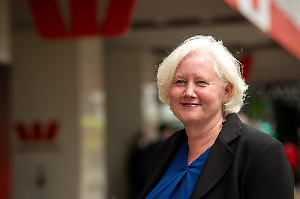
Investors are again on the back foot in the mortgage market when it comes to the amount being borrowed.
For the first time since July last year, first home buyers have overtaken investors, borrowing $1.543 billion in April.
In comparison investors borrowed $1.519 billion in the same month, compared to $1.188 billion in the same month last year and $718 million in April 2023.
The percentage of the total borrowed by investors dropped to 20% - the lowest since June last year. However, it was only slightly down on the 20.1% they took out in April last year.
In total, mortgage commitments fell to $7.579 billion in April from $8.488 billion for March, signalling the end of the summer selling season.
Adjusting for seasonal variation, the figures were the highest for an April in four years.
Kris Pedersen Mortgages founder and director Kris Pedersen says although investors mortgage borrowing dipped $280 million from March, they are still active in the market and have been since the first OCR cut in August last year. “More investors have come into the market with each interest rate cut.”
He says the general feeling from investors is house prices have bottomed out and interest rates are still dropping, giving them a bit more comfort. More savvy investors know there is still unfortunately quite a bit of economic pain to still go through, and many vendors are selling at prices lower than they would like.
“It’s just a natural part of the property market cycle. The more seasoned investors see there are deals to be done and they want to be able to take advantage of them.”
However, one stumbling block is bank turnaround times, Pedersen says. “They are as bad if not worse than what we were seeing at the 2021 peak of the market.
It is frustrating investors, particularly if a property has a three week marketing campaign before auction. Without bank pre-approval they can’t bid at auction or negotiate more aggressively because there are long finance clauses in the sale and purchase contract.
“We have been saying repeatedly to investors to be prepared as they can’t bowl up to an auction, sign a property up and have finance approval within five days. Finance clauses are now 10-15 working days and it can even take up to 20 days to get approval.
“The major banks are recruiting more staff, but they are a bit late to the party after some indicated in November/December last year when the pressure came on they had no intention of doing that. Nobody understood why, but that attitude has quickly reversed lately.”
Pedersen says borrowing for investors is not as difficult as it was a year ago when mortgage rates were at their peak. Bank test rates have dropped from 9-9.5% plus to 7% as interest rates have declined. Although that has increased affordability, there is a blip on the horizon with rents going backwards in some areas.
Another looming blip is the Reserve Bank’s new debt-to-income tool. He says it is not biting at the bank level yet, but getting information from them is difficult.
“For example, we are trying to get facts on how they are going to apply the 20% speed limit – what the spread will be between first time investors and bigger businesses? What are the rules around that?
“We have been saying repeatedly to investors to be prepared as they can’t bowl up to an auction, sign a property up and have finance approval within five days. Finance clauses are now 10-15 working days and it can even take up to 20 days to get approval.
“We can’t get any clear information. I don’t know if they have made up their minds yet and some investors with bigger portfolios are getting close to tapping into DTI territory.”
Most the investors Pedersen’s business has recently been arranging mortgages for have been through several property cycles. First time investors are still mainly on the sidelines as many are too highly leveraged and feeling the cashflow pinch.
Instead of buying in the country’s major urban areas, investors in the market have been snapping up high yield properties in the regions, in many cases multi-unit purchases, home and income properties and others needing renovation. “Clients are focusing on cashflow, even though the rent might initially not cover the outgoings.”
Mortgages for a standard investor buying a rental property are being 90% financed by the major banks, but for property investors and traders non-banks are the main option with fees and interest rates of between 9.9-12%.
Pedersen says today’s expected 0.25% drop in the OCR will bring more investors into the market, but a lot will depend on the Reserve Bank’s trajectory for the rest of the year.
“Some economists are saying a OCR low of 2.5%. That is another 1% off where we are now, test raes fall and DTIs will hit fast.”
While he sees limited capital growth in property over the next year or more and no rent growth for two years, Pedersen says savvy investors will take advantage of market at its ebb.




Comments
No comments yet.
Sign In to add your comment